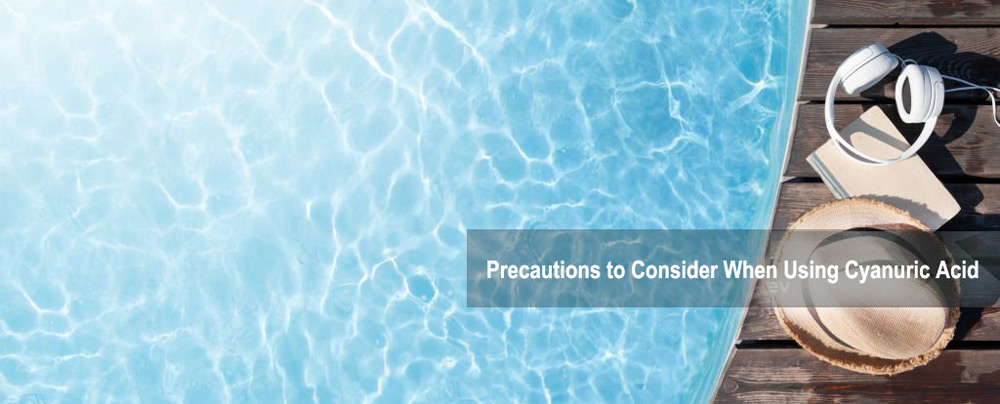Meðhöndlun innanhúss laugar er með sérstökum áskorunum varðandi vatnsmeðferð og efnagjöf. NýtinguSýanúrsýra(CYA) Í innanhúss laugum neistar umræður meðal sérfræðinga, með sjónarmið varðandi áhrif þess á skilvirkni klórs og öryggis fyrir notendur sundlaugar í fremstu röð.
Forgangsatriði í öryggi
Áhyggjur sem sérfræðingar hafa vakið varar gegn CYA notkun í innisiglingum undirstrikar hugsanlegar takmarkanir á sýkla getu klórs. Í iðandi vatnsgörðum innanhúss þar sem dreifingu sýkla er aukin, stafar öll málamiðlun í verkun klórs athyglisverðri áhættu fyrir lýðheilsu. Þess vegna, fyrir innisundlaugar sem upplifa umtalsverða fótumferð, einkum í vatnsgarða eða mjög tíðum afþreyingarstöðum, getur það sætt sig við notkun CYA dregið úr tilheyrandi öryggismálum.
Engu að síður eru mismunandi sjónarmið til meðal sérfræðinga sem eru talsmenn fyrir skynsamlega beitingu CYA í innisundlaugarstillingum, sérstaklega þeim sem eru umlukaðir af sólarljósum gluggum. Geta CYA til að draga úr skaðlegum áhrifum klórs á hár, húð og sundföt gerir það að verkum að það er dýrmæt eign í því að halda uppi vatnsgæðum og þægindi notenda. Að auki, fyrir einstaklinga sem eru viðkvæmir fyrir köfnunarefnis tríklóríði, hjálpar CYA við að draga úr útsetningu í lofti. Þess vegna getur CYA fundið hæfi í sundlaugum með minni umferð og minni sýklaálag, þar sem klórvirkni gerir ráð fyrir tiltölulega minni nauðsyn. (Þeir sem eru umkringdir af sólarljósi sem eru ótvíræðar gluggar)
Óhæf fyrir heita pottana
Á sviði viðhalds á heitum pottum hallar ríkjandi samstaða að því að lágmarka eða að öllu leyti forðast CYA nýtingu. Þó að óveruleg styrkur CYA gæti ekki valdið verulegri áhættu, getur aukið magn stuðlað að útbreiðslu skaðlegra sýkla í volgu vatnsumhverfi. Miðað við takmarkað vatnsrúmmál í heitum pottum geta jafnvel minniháttar breytingar á efnasamsetningu skilað áberandi áhrifum. Þannig að forðast frá cya-klórssamruni í heitum pottum og reiða sig í staðinn á óstöðuga klór eða bróm disinfectans samhliða ströngum prófunarreglum til að tryggja fullnægjandi frjáls klórmagn eða brómmagn fyrir meinandi stjórnun.
Þó CYA býður upp á ávinning eins ogStöðugleiki klórsog aukin þægindi notenda, hugsanlegir gallar þess í sérstöku samhengi, sérstaklega í innra umferðarlaugum og heitum pottum, réttlæta umhugsunarefni. Stjórnendur sundlaugar og rekstraraðilar verða að gera sér grein fyrir þessum þáttum og innleiða sérsniðnar aðferðir við efnastjórnun sem forgangsraða bæði árangursríkri sótthreinsun og öryggi notenda, sem tryggir hreinlætis og ánægjulegt sundumhverfi fyrir alla.
Post Time: Okt-22-2024

